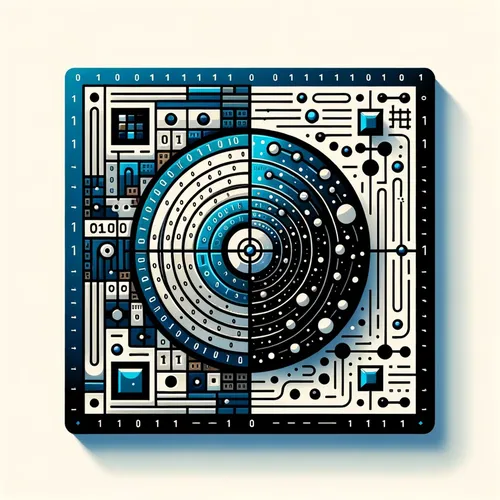Quantum Leap: Oak Ridge Unites Quantum and Classical Computing with Modular Software Blueprint
- Author
- Quiet. Please
- Published
- Fri 05 Sep 2025
- Episode Link
- https://www.spreaker.com/episode/quantum-leap-oak-ridge-unites-quantum-and-classical-computing-with-modular-software-blueprint--67645500
This is your Quantum Bits: Beginner's Guide podcast.
This week, the hum of anticipation in the quantum computing labs is almost electric—figuratively and literally. I’m Leo, your Learning Enhanced Operator, and today, I want to take you straight into the heart of a breakthrough that’s shifting the quantum programming landscape as fundamentally as Gutenberg’s press changed the printed word. Forget the slow slog of quantum code translation and brittle, hardware-specific software. Oak Ridge National Laboratory just unveiled a modular software blueprint designed to seamlessly unite quantum and high-performance classical computing systems—think CPUs and quantum processors forging a computational alliance. For a field infamous for hardware wars, this is as if every major railway in the 1800s suddenly agreed to use the same gauge track.
The timing couldn’t be better. Only days ago, I watched the research teams at Oak Ridge methodically connect their diamond-based quantum processors—operating impressively at room temperature—with the world’s fastest supercomputers right next door. Imagine stepping onto a floor bathed in the cool glow of cryogenic fridges, interwoven with racks of humming CPUs and, now, hybrids running code so advanced it sings in quantum harmony. The modular software framework they’ve launched means developers can finally write hybrid quantum-classical applications without rewriting their code every time the hardware evolves—a feat akin to inventing a universal adaptor for every power outlet on Earth.
This leap sidesteps a notorious pitfall: until now, quantum programming felt like building a cathedral on a faultline. Each time the hardware advanced, your entire application risked collapse. Now, with flexible, portable software infrastructure, even as qubit counts rise and new architectures arrive, your code remains resilient—a quantum lifeline into the future. Dr. Travis Humble at Oak Ridge likened this to the moment we shifted from CPU-only to GPU-accelerated computing: exponential leaps in capability, opening doors to simulations and optimizations that were once the stuff of science fiction.
As dramatic as this sounds, it isn’t confined to theory. Across the Atlantic, the EU’s QCDC project is granting unprecedented cloud access to world-class quantum machines, accelerating breakthroughs in biochemistry and materials science—problems once considered computational Everest, now tackled in record time.
Think about today’s world stage: Wall Street is trusting quantum optimization for real-time market decisions; Amazon’s logistics have been streamlined by quantum routing; weather predictions leapfrogged their old limits. Software, once the overlooked middle child, now acts as a universal translator between silicon and quantum realms.
Standing here, enveloped by the cold silence of a dilution refrigerator and the heat of discovery, I see a parallel with global efforts to cooperate in other realms—climate action, data sharing, pandemic response. Just as collaboration across quantum and classical boundaries accelerates progress, so too does human cooperation move us forward.
Thanks for tuning in to Quantum Bits: Beginner’s Guide. If questions or quantum quandaries ever strike, just email me at [email protected]. Subscribe for more episodes, and remember, this has been a Quiet Please Production. For more, check out quietplease.ai. Until next time, keep chasing the bits, both quantum and classical.
For more http://www.quietplease.ai
Get the best deals https://amzn.to/3ODvOta
